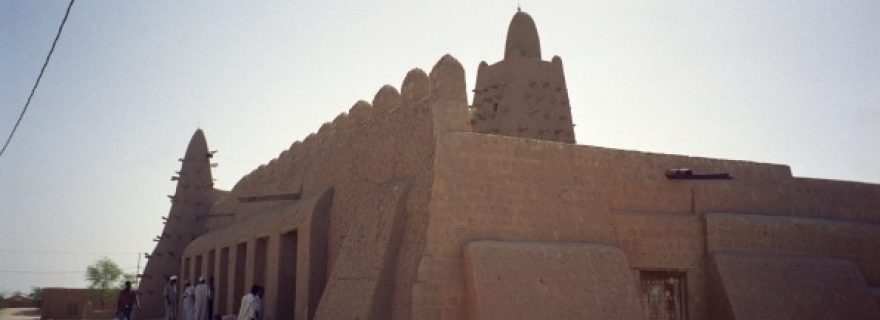Mali’s Heritage: Beyond Timbuktu
Mali is in the news because of the deployment of Dutch military personnel. Media coverage conjures up images of the 2012 destruction of Timbuktu’s World Heritage mausoleums and mosques. Might heritage also have a role in bringing peace and national unity?
Mali’s Heritage: Beyond Timbuktu
During the past few months, Mali has been in the Dutch news since Dutch military personnel have been deployed to the country as part of the UN peacekeeping mission. This attention to Mali – the country where I have done most of my research to date – brings back to mind the early months of 2012, when Mali was suddenly at the center of global media attention following a coup d’état in Bamako and the takeover of the country’s three northern regions by Tuareg nationalists and Islamist militants.
Heritage Destruction
The coup and subsequent events in March-April 2012 shattered Mali’s image as a relatively successful democracy and a country mostly known for its rich cultural heritage. Images of the destruction of Timbuktu’s mosques and mausoleums, recognized as World Heritage by UNESCO, were widely featured in the news media. Part PR stunt and part expression of Ansar-Dine’s severe Islamist ideology, the destruction of Timbuktu’s world heritage clearly brings out the contested political nature of heritage, and its symbolic capacity to represent, and be caught up in, larger ideological divides. The fact that recognized World Heritage objects were so swiftly targeted for destruction serves as a useful reminder of the potentially divisive nature of heritage.
Heritage’s Potential for Resilience and Peace?
In spite of all this, a recent conference addressed the question of whether, and how, heritage could play a more positive role in creating sustainable and healthy futures, particularly in the aftermath of a crisis? The concept of heritage as a form of ontological security, as proposed by Jane Grenville, one of the conference plenary speakers, constitutes one of the main theoretical underpinnings of this question.
In the case of Mali, the country’s challenge is to (re)build peace, trust, and unity on a national scale. In line with the guiding questions of the conference, which I was fortunate to attend, we may ask, “Can Mali’s rich cultural heritage be drawn upon to promote national rebuilding and reconciliation?”
The Role of UNESCO and Other Cultural Initiatives
Since the outbreak of the conflict in 2012, I have been struck by the emphasis in UNESCO’s discourse around the destruction and later rebuilding of cultural heritage in Timbuktu on the capacity of this heritage to bring people together and bring Mali forward. For example, on the occasion of UNESCO’s adoption of a rescue plan for Mali’s cultural heritage, its Director-General referred to heritage as “essential for national unity and reconciliation” and “a source of strength and confidence for the people of Mali as they consolidate the foundations of peace.”
Another interesting development is that in the most recent rounds of entries (in 2013) on the Representative List of Intangible Cultural Heritage, a joint nomination from Mali, Niger and Algeria was successful. The inscription of the Imzad musical tradition associated with women in the Tuareg communities in these three countries could hardly be a clearer statement by the UNESCO committee as to how they envision social and cultural life in Mali’s northern regions. It seems no coincidence that this inscription highlights the role of women and celebrates the importance of music, as it will be remembered that the Islamist groups issued restrictions on both music as well as the free movement of women when northern Mali was under their control.
The most concrete example to date of employing cultural heritage—primarily in the form of (again) musical traditions— is that of the “Cultural Caravan for Peace”. Started last year, this initiative was spearheaded by two renowned cultural festivals in Mali, the “Festival au Désert” in Timbuktu and the “Festival sur le Niger” in Ségou, along with the Moroccan Taragalte festival. According to the organizers of the joint Caravan, the “erosion of cultural heritage and knowledge” is among the major challenges the region faces at present.
These examples show that the discourse on heritage is indeed invoked in initiatives to foster peace, mutual understanding, and an inclusive cultural domain. More importantly, projects such as the Cultural Caravan for Peace are putting these ideas into practice. I will keep following this project, and I hope you will, too. (Also, if you know of other examples, please let me know!)



0 Comments
Add a comment